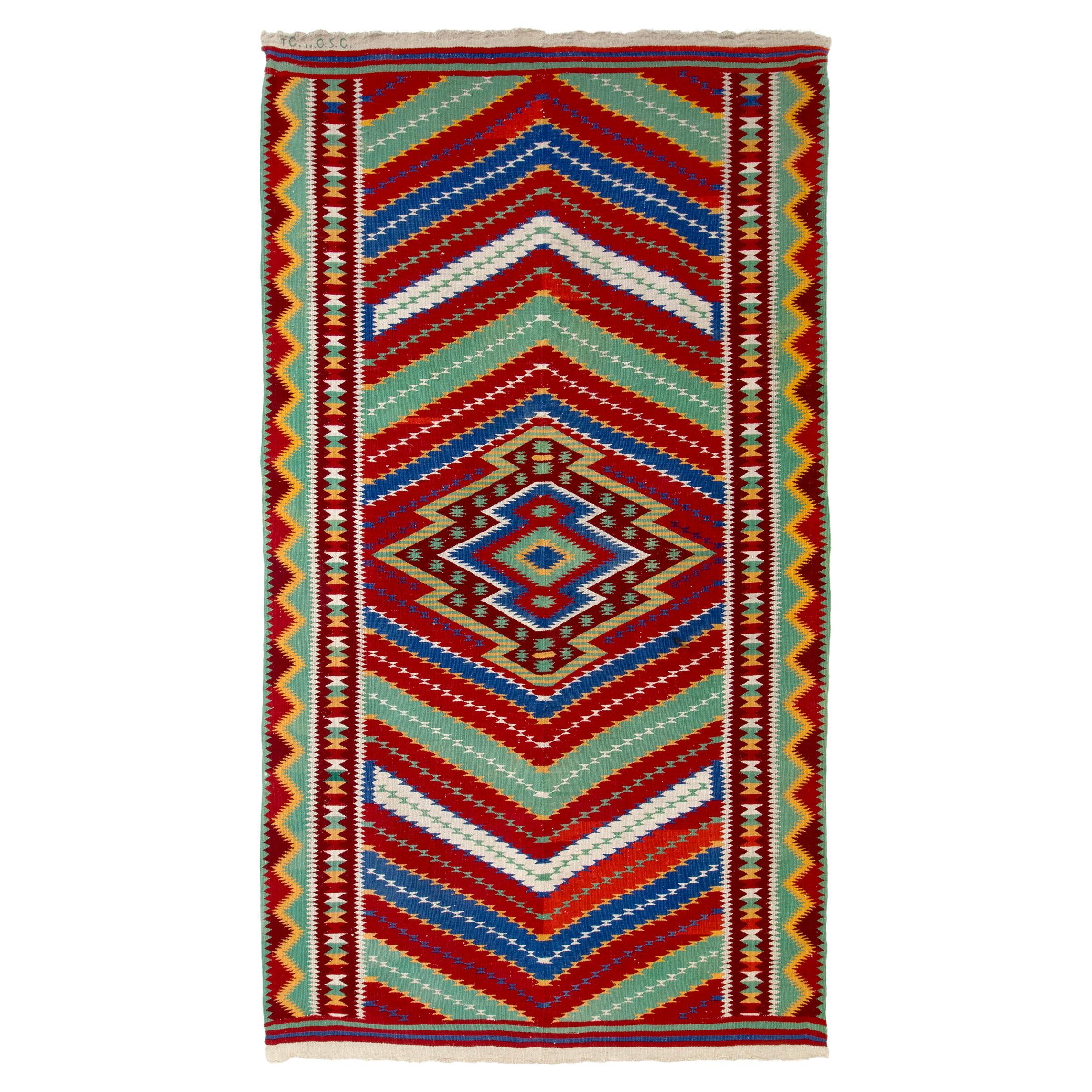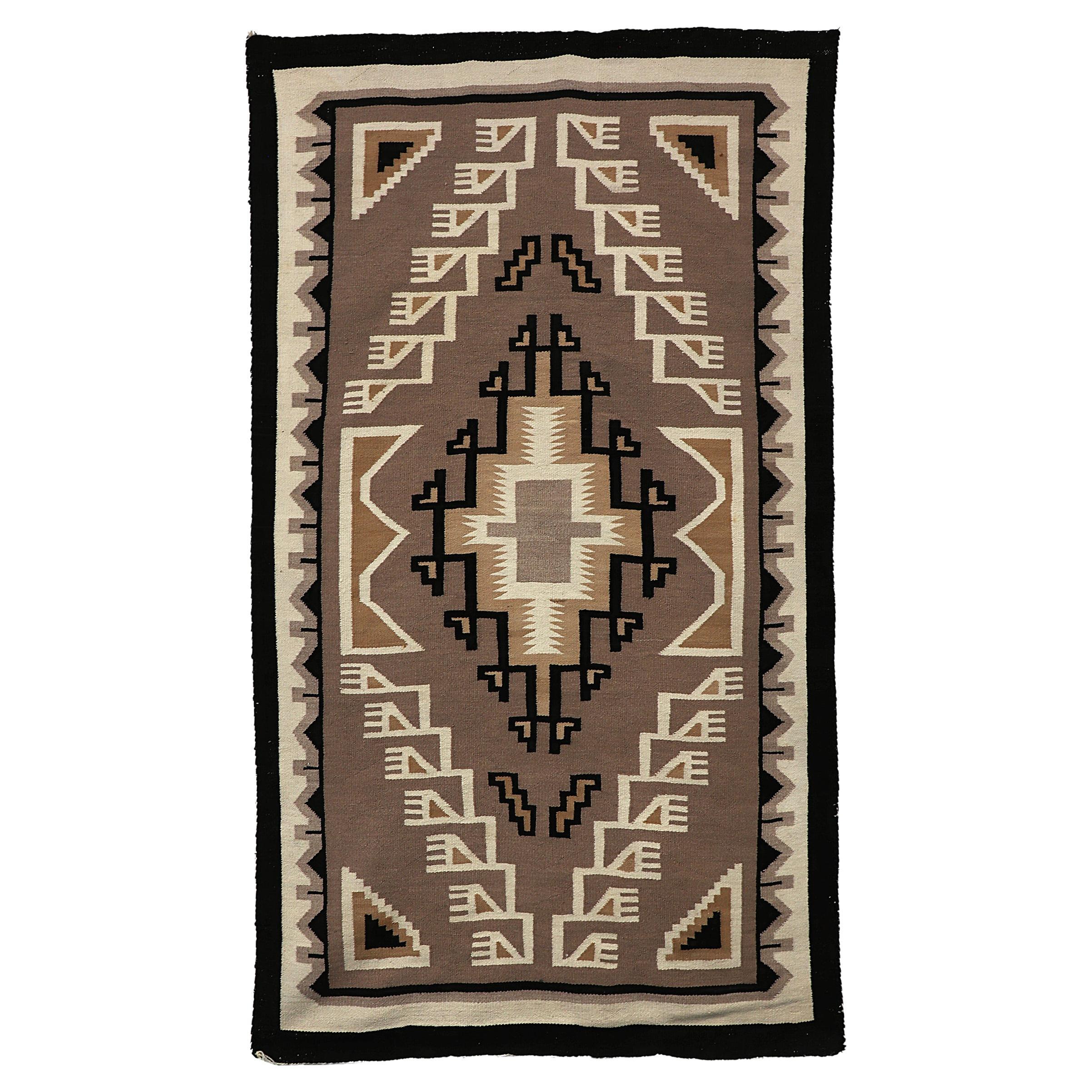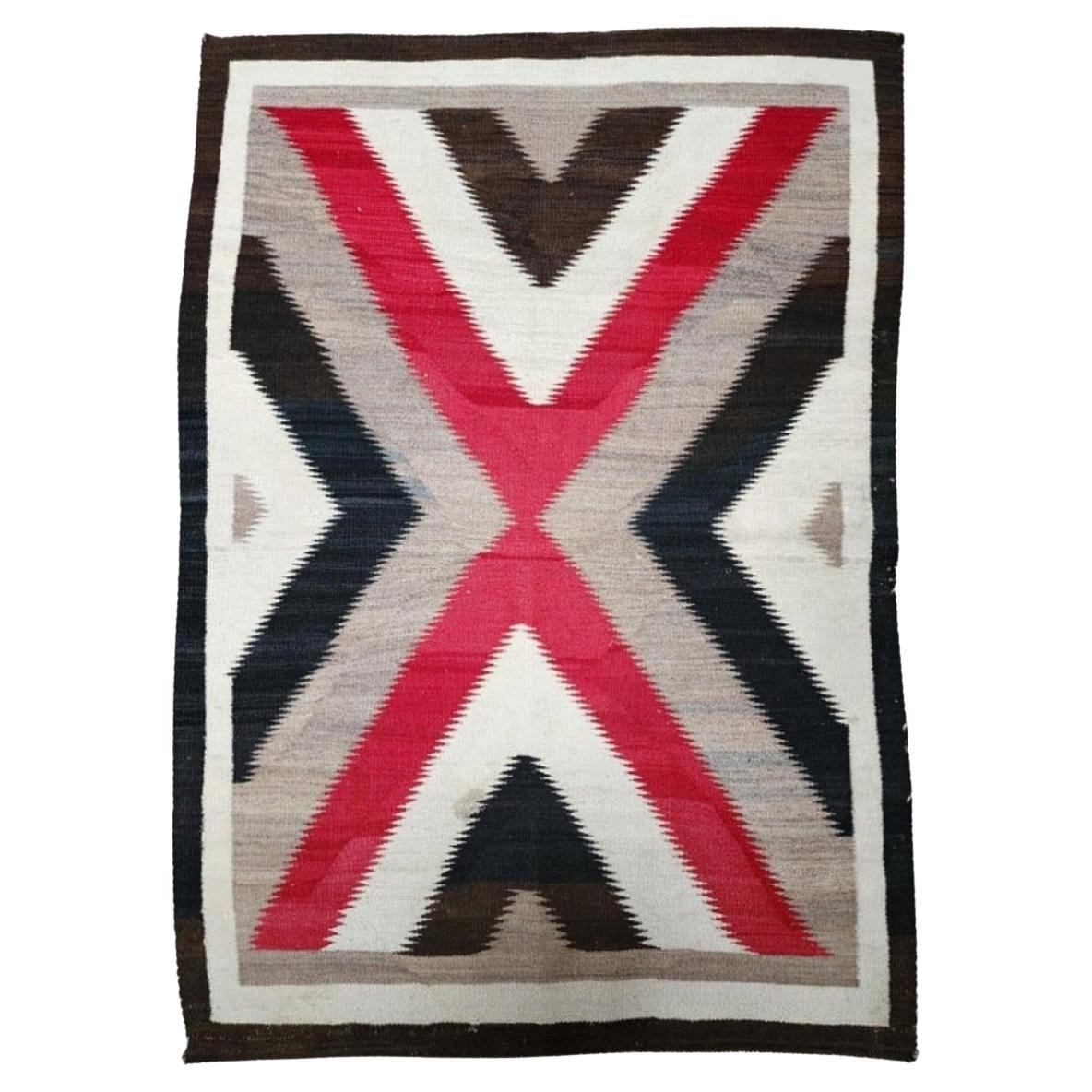Items Similar to Antique 1850s Mesoamerican Saltillo Serape Transitional Mounted Textile
Want more images or videos?
Request additional images or videos from the seller
1 of 11
Antique 1850s Mesoamerican Saltillo Serape Transitional Mounted Textile
About the Item
Mesoamerican Saltillo Serape transitional textile from 1850, made of wool with natural dyes in red, pink, blue, white and black. Presented securely mounted, outer dimensions measure 97 x 48 inches.
Weaving is clean and in very good condition.
Provenance: Private collection, Denver Colorado.
- Creator:Mexican Indian (Weaver)
- Dimensions:Height: 97 in (246.38 cm)Width: 48 in (121.92 cm)Depth: 0.25 in (6.35 mm)
- Style:Native American (In the Style Of)
- Materials and Techniques:
- Place of Origin:
- Period:
- Date of Manufacture:circa 1850
- Condition:Wear consistent with age and use. Minor fading.
- Seller Location:Denver, CO
- Reference Number:
About the Seller
5.0
Recognized Seller
These prestigious sellers are industry leaders and represent the highest echelon for item quality and design.
Established in 1979
1stDibs seller since 2013
143 sales on 1stDibs
Typical response time: 8 hours
- ShippingRetrieving quote...Ships From: Denver, CO
- Return PolicyA return for this item may be initiated within 7 days of delivery.
More From This SellerView All
- Rio Grande Serape, 1880s Saltillo, Germantown Yarns Diamond Pattern, Red GreenLocated in Denver, COAntique circa 1880 Rio Grande Saltillo Sarape, hand woven of Germantown yarns in colors of red, green, golden yellow, blue, and white in a diamond pattern, fringed at either end. Ready to hang on the wall with custom velcro mount (fully removable). The Rio Grande style of serape developed in the Southwestern United States in present day New Mexico and was inspired by Mexican Saltillo Serapes...Category
Antique Late 19th Century American Spanish Colonial Native American Objects
MaterialsWool, Cotton
- Navajo Two Gray Hills Area Rug, Trading Post Textile, Gray Ivory, Black, BrownBy Navajo Indian ArtLocated in Denver, CONavajo Area Rug, Two Gray Hills, Trading Post Era weaving made of wool , measures 81 ¾ x 46 ¾ inches. This textile is well suited for use on the floor a...Category
Early 20th Century American Native American Native American Objects
MaterialsWool
- Vintage Navajo Rug, Double Saddle Blanket, circa 1900By Navajo Indian ArtLocated in Denver, CONavajo Double Saddle Blanket, circa 1900. R.B. 71211 woven on front top half. Weaving measures 47 x 23 ¼ inches.Category
Antique Early 1900s American Native American North and South American Rugs
MaterialsWool
- Vintage Large Navajo Area Rug, Southwestern Red, Brown, White, Gray, circa 1930sBy NavajoLocated in Denver, COLarge vintage Navajo Area Rug weaving from the Hubbell Trading Post in Ganado, Arizona (Southwestern United States). Woven of native hand-spun woo...Category
Vintage 1930s American Native American North and South American Rugs
MaterialsWool
- Navajo Rug 1930s, Chinle Stripe & Diamond Pattern Ivory Camel Brown Blue RedBy NavajoLocated in Denver, COVintage circa 1930 Navajo Trading Post Rug from Chinle, Arizona. Woven of native handspun wool in natural fleece colors of ivory (white) and brown with aniline dyed blue, red and yel...Category
Vintage 1930s American Native American North and South American Rugs
MaterialsWool
- 1870s Transitional Plateau Rawhide Parfleche Envelope with Geometric PatternsBy Plateau IndiansLocated in Denver, COA parfleche container in an envelope form, finely painted in an abstract design. Makes a stunning wall hanging alone or in a grouping with other parfleche or can be placed on a shelf or Stand. This was created by a North American Indian living in the Plateau cultural area - encompassing portions of what is now northern Idaho, western Montana, northeast and central Oregon, eastern Washington and southeast British Columbia. The tribes from this region include Kalispel, Flathead, Kutenai, Palus, Coeur D'Alene and Nez Perce. Parfleches are rawhide containers which were fundamental to the Plains way of life. Functioning essentially as protective travelling suitcases, they enabled the nomadic tribes to effectively pursue buffalo herds and migrate between seasonal camps. So critical were they to a nomadic existence that over 40 tribes are known to have historically produced parfleches. Collectively, these tribes inhabited an area which encompassed the entirety of the Plains, as well as the parts of the Southwest, the Transmontane and Western Plateau regions. Parfleches were, out of necessity, robust and versatile objects. They were designed to carry and protect within them anything from medicinal bundles to seasonal clothing or food. In fact, it was because of the containers’ robusticity and variety that parfleches earned their name in the Anglo world. Derived from parer (to parry or turn aside) and fleche (arrow), the word parfleche was coined by 17th century French Canadian voyageurs and used to describe indigenous objects made from rawhide. Despite their common utilitarian function, parfleches served as one of the major mediums through which Plains Indian tribes could develop their long-standing tradition of painting. In fact, it is in large part due to the parfleche that tribal style emerged. Even though parfleche painting developed simultaneously with beading and weaving, painting as an artistic tradition held particular importance in tribal culture. Believed to have evolved from tattooing, it had always been used as a conduit through which tribal and individual identity could be expressed. As such, many tribeswomen were deeply committed, some even religiously, to decorating their parfleche either with incised or painted motifs that were significant to them and/or the tribe. For some tribes, such as the Cheyenne, the decorative processes which surrounded parfleche production were sacred. For others, it seems that their parfleche designs shared an interesting artistic dialogue with their beadwork, indicating a more casual exchange of design motifs. This particular relationship can be seen in Crow parfleche...Category
Antique Late 19th Century North American Native American Native American...
MaterialsHide
You May Also Like
- Navajo Transitional Serape, circa 1870By NavajoLocated in Coeur d'Alene, IDClassical Navajo transition serape tied on fringe both ends, stacked white diamonds with blue dark brown centers and bands. 4' x 6'8" Period: circ...Category
Antique 1870s American Native American Native American Objects
MaterialsOther
- Antique Navajo Weaving 1890By NavajoLocated in Hudson, NYCirca 1890 Navajo weaving with a very elegant and modern design. Nice mottling of the natural colors, especially in the reds. This is a very bold weaving,...Category
Antique Late 19th Century American Navajo Native American Objects
MaterialsWool
- Antique American Navajo Ivory Tribal RugLocated in New York, NYA highly decorative 20th-century American Navajo rug with a geometric tribal design with pink, cream ,camel and brown accents Measures: 3'5'' x 6'2''.Category
Early 20th Century American Native American North and South American Rugs
MaterialsWool
- Zabihi Collection Antique American Navajo Tribal RugLocated in New York, NYA highly decorative 20th-century American Navajo rug with a geometric tribal design Measures: 3'2'' x 4'10''.Category
Early 20th Century American Native American North and South American Rugs
MaterialsWool
- Antique Navajo Weaving Late 19th CenturyBy NavajoLocated in Hudson, NYCirca 1890 Navajo weaving with a very elegant and modern design. Nice mottling of the natural colors, especially in the reds. This is a very bold weaving. This weaving is in good as ...Category
Antique 1880s American Navajo Native American Objects
MaterialsWool
- Zabihi Collection Antique American Navajo Ivory Tribal RugLocated in New York, NYAn early 20th Century American Navajo tribal blanket weaving Details rug no. j3611 size 3' x 4' 10" (91 x 147 cm)Category
Early 20th Century American Native American North and South American Rugs
MaterialsWool
Recently Viewed
View AllMore Ways To Browse
American Dimensions
Antique American Art
American Made Mid Century Furniture
American Made Antique Furniture
American 19th Century Antiques
Furniture Made In Mexico
Antique Mexico
Antique Mexican
Mexican Antique
Antique Mexican Furniture
Antique Mexican Furniture Furniture
Mexican Antique Furniture
Mexico Antique
Mexican Antiques
Mexican Midcentury Art
Native Antique
19th Century Mexican
19th Century Mexico





